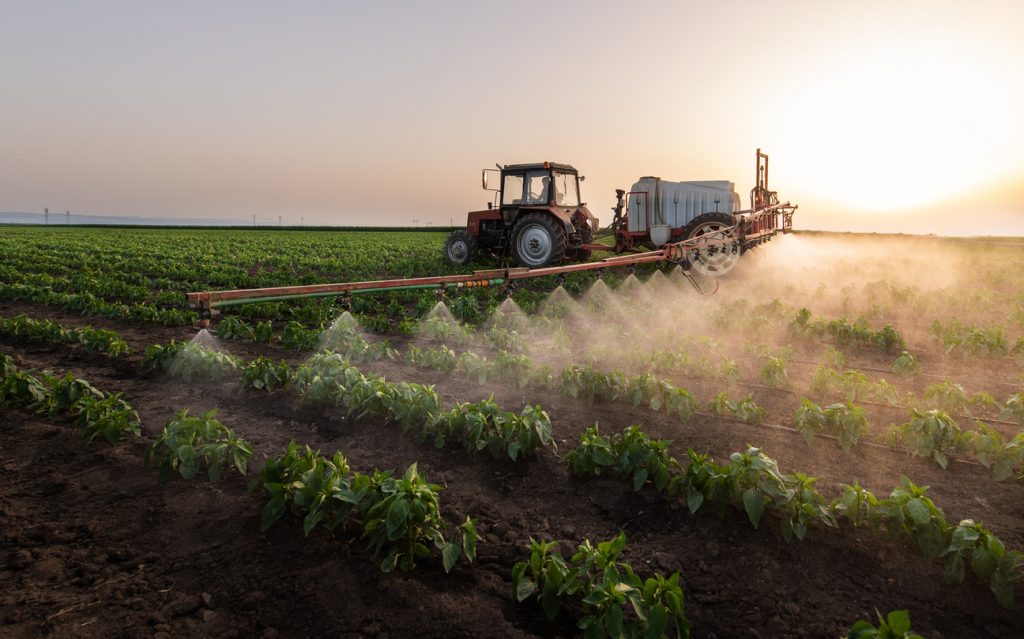Inflation has risen to record levels around the world for a number of reasons, but one of the most important is the increasing cost of food.
As the cost of natural gas has soared following Vladimir Putin’s invasion of Ukraine in February last year, so has the cost of fertiliser, making even food grown outside of the conflict zone more expensive to produce.
The best quality fertiliser, as favoured in Europe, is nitrogen based; nitrogen is extracted from the atmosphere with hydrogen; and hydrogen is typically made from reforming natural gas.
As well as being a major source of carbon dioxide – fertiliser production accounts for 2.1% of all greenhouse gas emissions – the fertiliser industry’s dependence on Russia for one of its major inputs is a huge risk to food security.

Pictured: Tractor spraying fertiliser on vegetables. The best quality fertiliser, as favoured in Europe, is nitrogen based; nitrogen is extracted from the atmosphere with hydrogen; and hydrogen is typically made from reforming natural gas.
“Putin is weaponising food,” Svein Tore Holsether, CEO of Yara International, told the Financial Times in a recent interview. “This is not only a war fought with military weapons, it’s with energy. And he’s weaponising food and fertiliser.”
Fortunately, green hydrogen can also be produced without natural gas, by splitting water with electrolysers powered by renewable energy, creating no carbon emissions in the process. So-called blue hydrogen is made in the traditional manner with natural gas, but the carbon is captured.
Yara, one of the world’s largest producers of nitrogen-based fertilisers, is investing in its own green and blue hydrogen production as well as how to source the fuel from third parties.
In the Netherlands, it captures CO2 from its operations and buries it under the North Sea with the help of energy majors Shell, Total and Equinor. In Norway, Yara is working with Danish renewable energy company Orsted to both build its own green hydrogen production facilities and as a buyer of the finished product.

Inflation has risen to record levels around the world for a number of reasons, but one of the most important is the increasing cost of food. Pictured: Northern Europe corn fields and grain storage.
One of the favoured methods for transporting hydrogen over long distances is in the form of ammonia, thanks to its superior volumetric density, and Yara, as the largest ammonia trader in the world with 12 ships and related infrastructure, sees a considerable business opportunity emerging.
Yara said in early January it plans to increase capacity of its ammonia import facilities at German ports from 600,000 tons to 3 million tons, which equates to roughly 530,000 tons of hydrogen.
The unit that handles this business, Yara Clean Ammonia, has signed multiple deals over the past year towards building an ammonia supply chain with industry majors such as Japanese shipping giant MOL, clean fuel company Amogy, Australia’s Pilbara Ports and Lloyd’s Register respectively.
By expanding the infrastructure for transporting and distributing hydrogen, Yara looks set to become a major enabler of the hydrogen economy in the coming years.
To learn more about Ryze Hydrogen click here.






